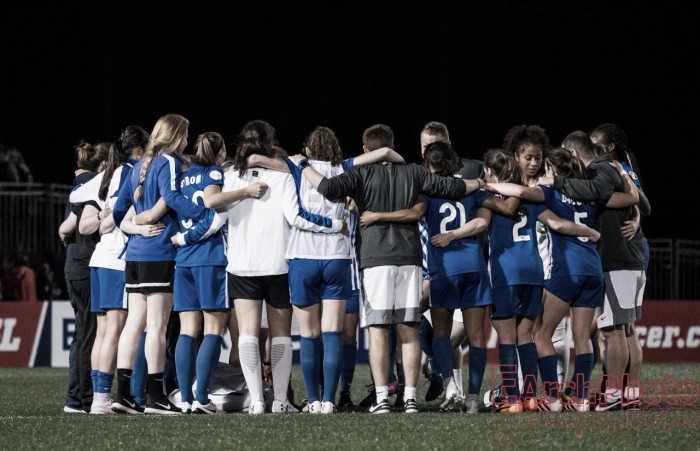After months of trying to find a new owner after the Boston Breakers' ownership, Boston Women’s Soccer LLC, informed the league that they could no longer operate the team at the end of the 2017 season, the NWSL began to search for potential buyers.
The league entered into a negotiation period with one group, but the deal to secure the sale prior to the 2018 NWSL College Draft fell short. Thinking they could still save the team by exploring possibilities, the NWSL proceeded with the draft, and the rumors that the Breakers were in trouble only intensified.
Ultimately, as all efforts failed, the NWSL made the decision to cease the club's operations. It was not the route the National Women's Soccer League wanted to take, but in the end, it was the only option.
And for the second time this off-season, the NWSL saw another one of its original franchises fold. Additionally, for the second time, we are left wondering "who wins, and who loses?" just like we were when FC Kansas City folded in November 2017.
Who Wins?
The Players
Perhaps the ones to benefit from this are the Breakers players themselves in terms of joining financially-stable teams, at least. It may not be under the best of circumstances, however, but the majority of the players who were selected via the Dispersal Draft on Tuesday will play under more professional settings such as Portland, Utah, Chicago, Houston, and Orlando. All of these teams play in MLS-owned stadiums and have access to its facilities.
.jpg)
Even if not all of the NWSL teams are backed by MLS clubs or play in soccer-specific stadiums, they are not in the same dire financial trouble as the Breakers were, as it had been initially reported that the Breakers had missed several payments to the league. How much did the Breakers' financial situation affect the players is not known, however.
The Nine Other NWSL Teams
All teams received a boost to their rosters by adding young talented players from the Breakers, including Rose Lavelle, Savannah McCaskill, Megan Oyster, Alysha Chapman, Julie King, Kyah Simon, to name a few. As the Dispersal Draft took place, it was noticed how deep this Breakers roster was for the 2018 season, full of young and up-and-coming players.
Even more, all contracted players (including allocated players) and 2018 College Draft picks selected via the Dispersal Draft will not count against the club’s official 18-20 player roster for the 2018 season. Teams' salary caps will not be affected either as they will not count against the club’s salary cap and housing and auto expenses will not count against the Permitted Team Assistance Cap.
Who Loses?
The NWSL
The league may have again salvaged a situation by making sure that the players would still have an opportunity to play for a team in the NWSL. Nevertheless, this is the second time this off-season where a storied franchise had to cease operations. Losing one team was enough, but now having two teams fold in a matter of months does not reflect well on the league at all.
When FC Kansas City folded in November, the league had lined up an owner, Real Salt Lake's Dell Loy Hansen, willing to invest in the NWSL. This time, despite every effort, we saw a team completely fold without an ownership to come to the rescue, leaving its players uncertain about their futures.
In the league's six-year history, three of its original clubs are no longer a part of the league (the Western New York Flash relocated to North Carolina in January 2017).
Non-Boston/Non-Allocated Players
Adding three to four players to a roster will undoubtedly make every starting spot more competitive. While the roster size will not be affected by the additions, there are only nine teams with eleven starting spots each game.
Basically, there is a lot of players, but not enough teams to guarantee every player playing time. Though players did not wish for the circumstances of Boston, they are still competitive athletes, and they want to play as much as possible.
Head coaches will have quite the time this year evaluating who starts and who does not. Players who were once starters may find themselves coming off the bench.
The Boston Community and Fans
It's never easy to watch a team fold, especially if one is a fan of the NWSL, but this is a big loss for the Boston community. The Boston Breakers have been synonymous with women's professional soccer since the WUSA, the first women's professional league that was created in 2001, and they have been for every women's league since that time (WPS, WPSL, and NWSL that followed).
Though attendance for the Breakers was one of the lowest in the league in 2017 with an average of 2,896 (8th out of 10 teams), there were still Breakers fans in Boston.
The NWSL left the door open for a potential return to the Boston area should an owner be willing. Hopefully, someday, that will the case.









































